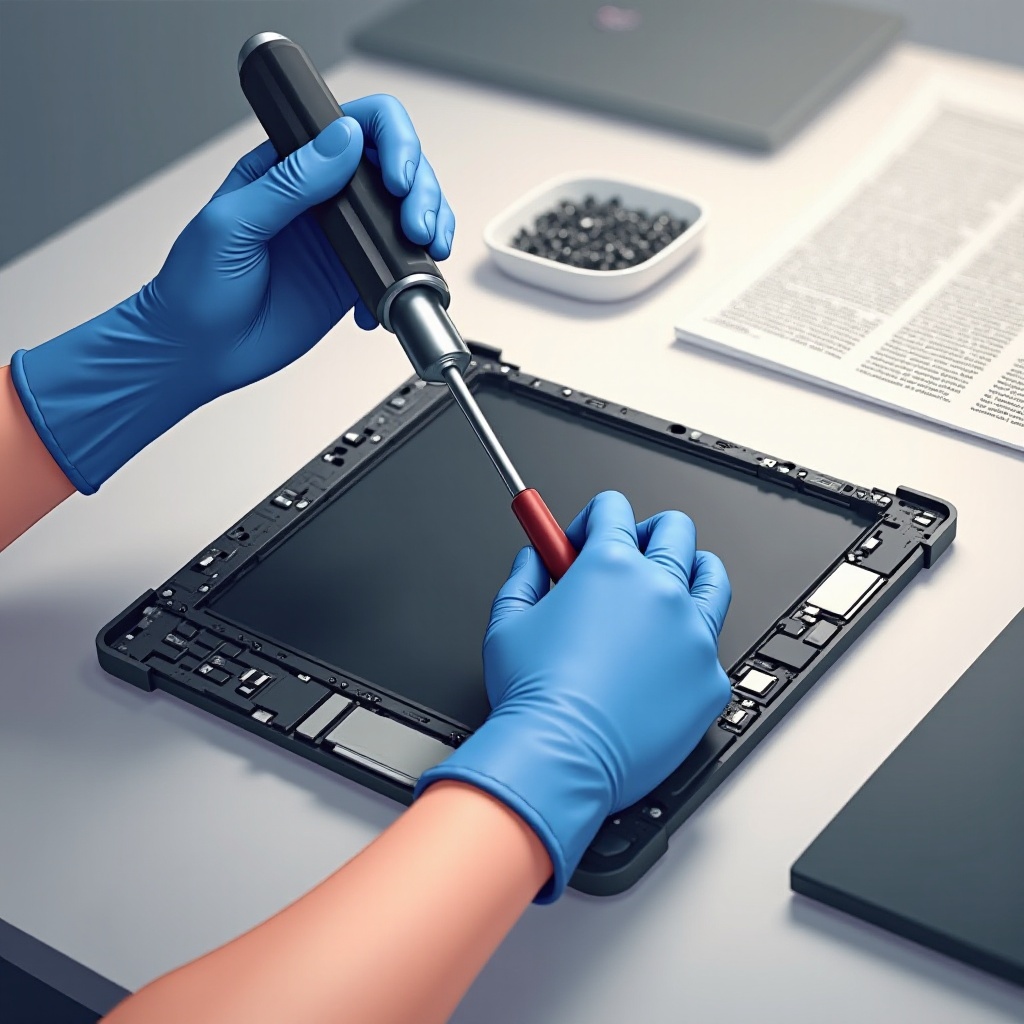Introduction
The screen of your Chromebook is cracked, and you’re likely wondering, ‘Can I replace my Chromebook screen myself?’ Many users face this question as screens are one of the most fragile parts of a device. Fortunately, replacing a Chromebook screen isn’t as daunting as it may seem. With the right tools, a bit of patience, and our step-by-step guide, you can replace your Chromebook screen yourself. This article walks you through assessing the damage, gathering necessary tools, the replacement process, dealing with common challenges, and ensuring safety. By the end of this post, you’ll understand everything you need to replace your Chromebook screen effectively.

Assessing the Damage
Before you jump into any repairs, it’s crucial to assess the extent of the damage. A simple crack might seem less significant, but internal damage could be more severe. Take the following steps to assess the damage:
- Examine the Screen: Look for visible cracks, lines, or spots. If the screen is black or has unusual patterns, internal damage might have occurred.
- Check Functionality: Ensure that the device powers on and operates properly. A severely damaged screen may not respond to touch or will display nothing.
- Identify Model and Make: Determine your Chromebook’s model and make. Screens vary based on model specifications, so knowing this information will help you find the correct replacement screen.
By taking the time to thoroughly inspect the damage, you can ascertain whether a screen replacement is indeed the solution and ensure you have the right replacement for your specific Chromebook model.

Gathering Tools and Materials
Successfully replacing your Chromebook screen requires specific tools and materials. Gather the following items to prevent interruptions during the repair process:
- Replacement Screen: Purchase a screen compatible with your Chromebook model. Double-check the specifications to ensure you have the correct part.
- Small Screwdrivers: Commonly, you’ll need Phillips and flathead screwdrivers. Precision screwdrivers are ideal for handling tiny screws.
- Plastic Pry Tools: These tools help in gently separating snaps and parts without causing additional damage.
- Antistatic Wrist Strap: This prevents static electricity from damaging internal components.
- Soft Cloth: A microfiber cloth can clean the new screen and avoid scratching it during installation.
- Adhesive Strips: If necessary, have adhesive strips ready to secure the new screen in place.
Having these tools and materials prepared beforehand will streamline the repair process and minimize the risk of damage during screen replacement.
Step-by-Step Replacement Process
Replacing your Chromebook screen involves several detailed steps. Follow this process to replace your Chromebook screen safely:
- Power Down and Unplug: Make sure your Chromebook is powered off and unplugged from any power source. Remove the battery if possible.
- Remove the Frame Bezel: Use the plastic pry tool to carefully remove the frame bezel around the screen. Do this gradually to avoid breaking the plastic snaps.
- Unscrew the Broken Screen: With a precision screwdriver, remove the screws securing the broken screen to the device. Note the placement of each screw to ensure proper reassembly.
- Disconnect the Cable: Delicately disconnect the ribbon cable that connects the screen to the motherboard. Handle it gently to prevent damage to the connector.
- Install the New Screen:
- Align the Screen: Place the new screen in position and connect the ribbon cable securely back to the motherboard.
- Secure the Screen: Replace the screws to hold the new screen in place. Tighten them carefully to avoid applying too much pressure.
- Reattach the Bezel: Snap the frame bezel back into place around the screen, ensuring all snaps are secure.
- Power On and Test: Power up your Chromebook and test the new screen. Verify proper functionality and touch response.
Following these steps carefully will help you replace your Chromebook screen successfully. If any problems arise during the replacement process, the next section addresses common challenges you might encounter.
Common Challenges and Solutions
Even with a clear guide, challenges can occur during screen replacement. Here are common issues and their solutions:
- Screen Won’t Turn On:
- Solution: Recheck the ribbon cable connection to ensure it is secure. Ensure the battery is properly connected and charged.
- Loose Bezel:
- Solution: Inspect the snaps and ensure they are correctly aligned. Apply slight pressure along the edges to secure the bezel.
- Touch Function Not Working:
- Solution: Double-check all cable connections. A loose connection can interfere with touch functionality.
Being aware of these challenges and their solutions in advance can save you time and frustration during the repair process.
Safety Tips and Best Practices
Safety should always be a priority when undertaking any electronic repair. Here are essential safety tips and best practices:
- Work in a Clean Environment: A clutter-free, clean workspace helps prevent accidental damage to components.
- Wear an Antistatic Wrist Strap: This prevents static electricity from damaging internal parts.
- Handle Components Carefully: Avoid applying excessive force when disconnecting cables or removing parts.
By following these safety measures, you can safeguard both yourself and your Chromebook during the repair.

Conclusion
Replacing your Chromebook screen yourself is entirely feasible with the right guidance and tools. By assessing the damage, gathering necessary tools, following a detailed step-by-step process, addressing common challenges, and adhering to safety tips, you can successfully undertake this repair. While it may take some time and patience, the effort can save you money and give you a sense of accomplishment. Ensure you meticulously follow the steps, keep safety in mind, and you’ll have your Chromebook looking and functioning as good as new.
Frequently Asked Questions
What tools do I need to replace my Chromebook screen?
You will need a replacement screen, small screwdrivers (Phillips and flathead), a plastic pry tool, an antistatic wrist strap, a soft cloth, and adhesive strips.
How long does it take to replace a Chromebook screen?
The replacement process typically takes about 30-60 minutes, depending on your familiarity with the device and complexity of the repair.
Is it cheaper to replace the screen myself or hire a professional?
Replacing the screen yourself is usually cheaper, as you only need to pay for the replacement screen and possibly some basic tools. Hiring a professional includes labor costs, which can significantly increase the expense.

